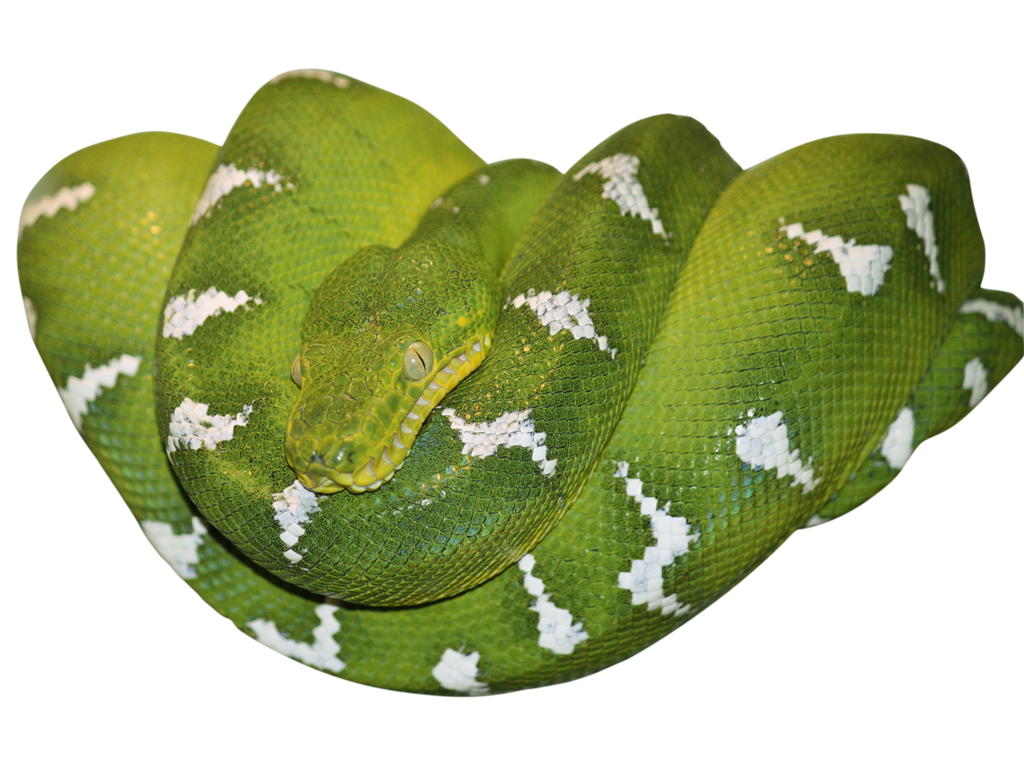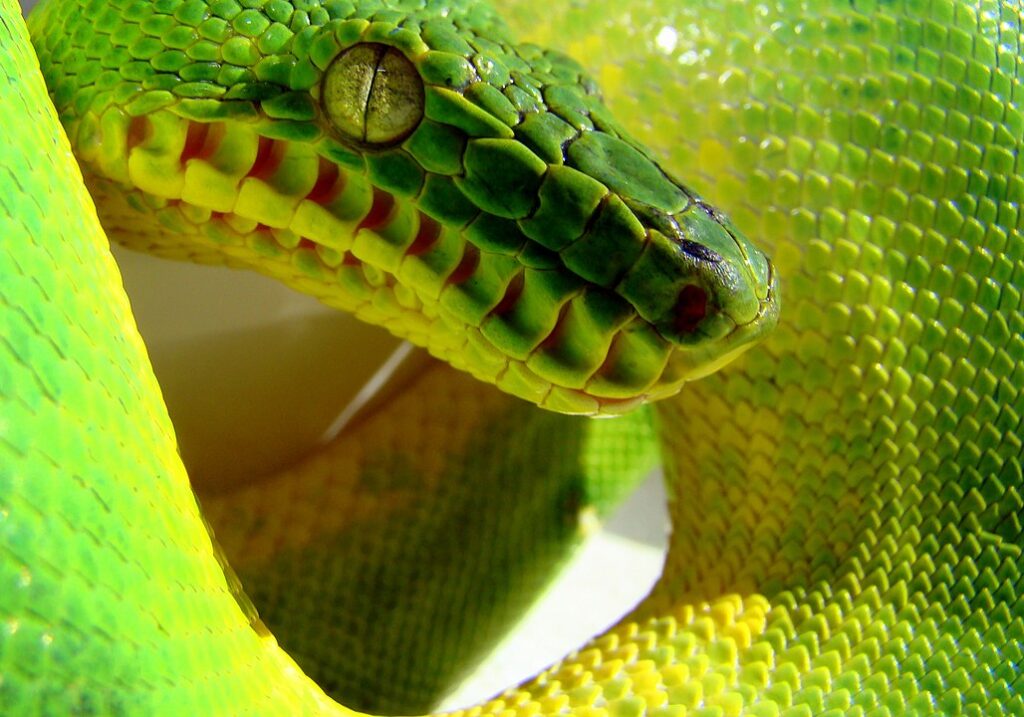Emerald Tree Boa
Corallus caninus

Can ”see” heat
The emerald tree boa is a nonvenomous snake that lives in tropical forests in South America. It gets its Latin name, caninus, because the shape of the snake’s head resembles a dog – Canis lupus in Latin.
By night, the snake hunts with the help of heat pits. These are pits on the lip that detect changes in the temperature of the environment. The pits eliminate the need for the snake to use its eyes when looking for prey, as the body heat of the prey is detected by the heat pits. Once the snake has captured its prey, it does not need to eat for several months. This is because digestion is very slow.

Photo: Pogrebnoj-Alexandroff-CC-BY-SA
The longest teeth
The emerald tree boa has the longest teeth of all nonvenomous snakes, relative to its size. The snake lives mostly in trees. During the day it rests wrapped around a branch. Once the emerald tree boa has mated, the female carries the fertilised eggs in her body until they hatch inside her. She then gives birth to the young alive. The babies of the emerald tree boa are often red orange in colour.
The snake inhabits the rainforest, which is undergoing increasing human destruction. As a result, it has less and less space to live in, and is in danger of being greatly reduced in numbers.
The Emerald tree boa is not venomous, but has long fangs. In this photo, the fangs are partially recessed.
Photo: Nate-J-E-CC-BY-SA
The emerald boa's young are often orange coloured.
Photo: Johanna-Rylander-Malmö-Museer
Distribution worldwide
Tropical parts of South America.
White marking = Distribution

Threat based on the Red List

Trade regulations
CITES: B-listed.